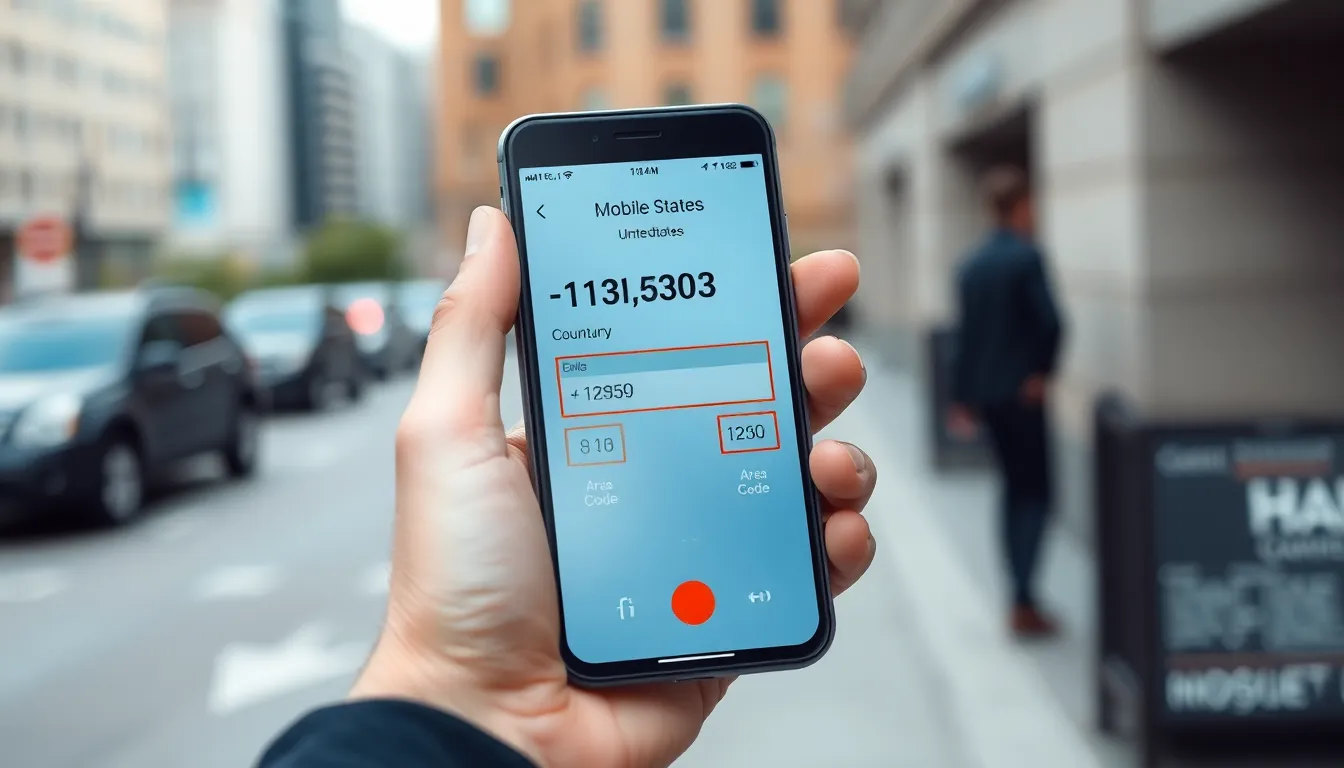In a world where everyone seems glued to their smartphones, understanding what a mobile number is becomes essential. It’s not just a string of digits; it’s your personal hotline to the universe. Need to order pizza? Text your friend? Or maybe just avoid that awkward conversation with your aunt? A mobile number is your ticket to seamless communication.
But wait—what exactly makes a mobile number so special? It’s the key to staying connected in a fast-paced digital age. With a mobile number, you can reach out and touch someone (figuratively, of course) from anywhere. So whether you’re a tech newbie or a seasoned pro, it’s time to dive into the world of mobile numbers and discover why they’re more than just a way to avoid missing that all-important call from your boss.
Table of Contents
ToggleWhat Is a Mobile Number
A mobile number serves as a unique identifier for a mobile device. It consists of a series of digits that connects a user to a cellular network. Typically, these numbers include a country code, followed by a national destination code, and then the subscriber number.
Various mobile networks assign these numbers to facilitate voice calls, text messaging, and data transfer. Users rely on mobile numbers for everyday tasks like messaging friends, placing orders, and accessing banking services. The format varies depending on the country’s telecommunications regulations.
Security and privacy significantly depend on mobile numbers. Many digital services require a mobile number for two-factor authentication, adding a layer of protection to user accounts. Businesses also leverage mobile numbers for customer engagement, sending promotional offers and updates directly to users.
In emerging markets, mobile numbers enhance connectivity. Many individuals use mobile devices as their primary means of accessing the internet. This trend underscores the essential role mobile numbers play in daily life.
Overall, mobile numbers aren’t just contact points; they represent vital links between people and the digital world. Understanding their functionality helps users navigate an increasingly interconnected society.
The Structure of Mobile Numbers

Mobile numbers consist of various components, each serving a distinct purpose in ensuring communication. Understanding these parts can deepen one’s awareness of how mobile connections work globally.
Country Code
Country codes, represented by one to three digits, precede a mobile number. These codes identify the country in which the mobile service is registered. For instance, +1 signifies the United States, while +44 represents the United Kingdom. This code provides an immediate recognition of the geographical area, facilitating international calls. Adhering to the correct format enables successful connections across borders.
Area Code
Area codes typically follow the country code in a mobile number. These codes designate specific regions within a country, such as cities or metropolitan areas. In the U.S., example area codes include 212 for New York City and 310 for Los Angeles. Each area code helps route calls effectively, ensuring users connect to the intended recipient within their locality. Correct usage of area codes enhances call reliability and efficiency.
Subscriber Number
The subscriber number completes the mobile number structure, identifying an individual subscriber’s line. Typically consisting of four to ten digits, this unique number allows network operators to deliver calls and messages correctly. For illustration, a mobile number with the format +1 (212) 555-1234 shows 555-1234 as the subscriber number in New York. It serves as the final segment needed to ensure precise routing, enabling seamless communication between users.
How Mobile Numbers Work
Mobile numbers function as unique identifiers for connecting devices to cellular networks. Understanding their operations sheds light on essential communication processes.
Switching Between Networks
Switching between networks is a common practice among mobile users. Users often change operators for better coverage, pricing, or services. When they do, mobile numbers remain unchanged, allowing seamless transitions. This portability enhances user convenience while maintaining communication continuity. Subscribers must follow specific steps, such as acquiring a porting authorization code. It ensures carrier compatibility and allows for uninterrupted service during the transition.
International Roaming
International roaming allows mobile users to stay connected while traveling abroad. Often, mobile operators establish partnerships with foreign carriers to facilitate this service. Users can receive calls, send messages, and access data as if they were at home. Costs vary significantly; roaming charges may reflect the destination’s rates and the user’s home plan. Subscribers should check their roaming policies and related fees before traveling to avoid unexpected expenses. By understanding how international roaming works, users can engage in global communication without complications.
Importance of Mobile Numbers
Mobile numbers serve as crucial links between individuals in a highly interconnected world. They facilitate communication through various channels like voice calls, text messaging, and social media. Utilizing mobile numbers enhances personal and professional interactions, making them indispensable in everyday life.
Security features heavily rely on mobile numbers. Two-factor authentication, for instance, uses them to verify identities, safeguarding accounts and personal information. Users receive confirmation codes via SMS, ensuring only authorized individuals gain access.
In emerging markets, mobile numbers play a transformative role in connectivity. They often represent the primary means for internet access, allowing people to engage in online transactions and social networking. This connectivity can support economic growth and improve access to essential services.
Switching mobile operators doesn’t require changing numbers, promoting user convenience. This portability enables individuals to choose services that best meet their needs without losing their established contacts. The retention of mobile numbers fosters continuous communication regardless of any changes in network providers.
Global travel highlights another vital aspect of mobile numbers. International roaming allows users to stay connected while abroad. Users can make calls, send messages, and utilize data packages, although they should keep in mind potential roaming fees.
Understanding the structure of mobile numbers enhances their usability. The country code signifies the region, while area codes refine calls to specific locations. Finally, the subscriber number identifies individual lines, completing a comprehensive communication framework.
Mobile numbers not only represent personal connections but also serve as gateways to a broad range of services. They enable users to order food, book rides, and access banking services, exemplifying their multifaceted importance in the digital age.
Mobile numbers are indispensable in today’s interconnected world. They serve not only as communication tools but also as vital links to various services and opportunities. By understanding their structure and functionality, users can better appreciate how mobile numbers enhance daily interactions and facilitate access to essential services.
As technology evolves, the role of mobile numbers will continue to expand, shaping how individuals connect and engage in both personal and professional spheres. Embracing this knowledge empowers users to navigate the digital landscape more effectively, ensuring they stay connected in an ever-changing environment.










